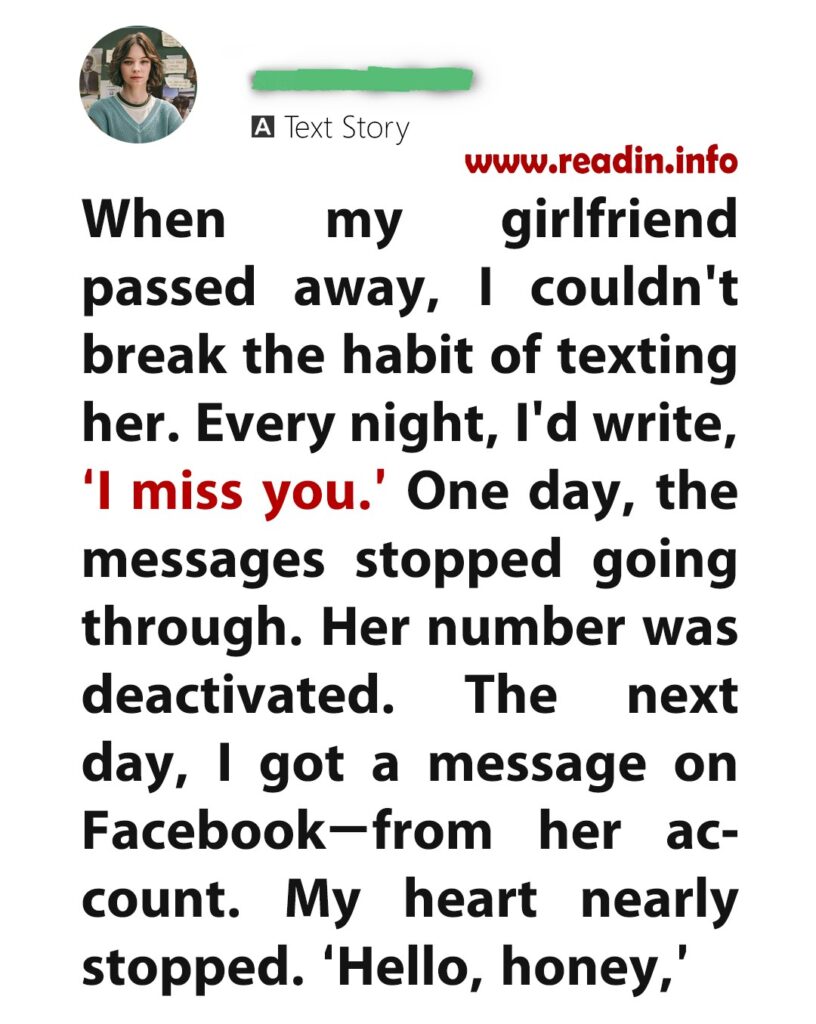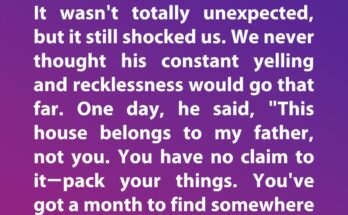After my girlfriend passed away, I found solace texting her “I miss you” every night—until her number stopped working. Then, one evening, a message appeared from her Facebook: “Hello, honey.” My heart froze. But it wasn’t her—it was Mira, her sister, reaching out through grief.
We started talking, hesitant at first, but grief made us honest. We shared memories, cried, and found comfort in being broken together. Mira wasn’t trying to replace her—just offering connection.
Months passed. She visited, and we stood side by side at her sister’s grave. What we had wasn’t romance—it was healing. Then, she vanished. No reply, no trace, her account gone.
Later, I got a message: it wasn’t Mira at all. It was Rachel—her roommate. She’d created the identity to cope with her own loss, needing someone who understood pain. I felt betrayed—but strangely, also seen. What we shared was genuine, even wrapped in falsehood.
Time passed in silence, until a letter arrived. Rachel was in therapy now, helping others navigate grief. She told me: love is still possible, even through loss.
I never saw her again, but I saw her photo in a grief center brochure. And I realized: healing rarely looks like you expect. Grief is chaotic, but human connection—even in disguise—can still guide you forward.

If you’re hurting, you’re not alone. You don’t need perfect closure to keep going. Just a thread of truth, woven through pain, can be enough.

